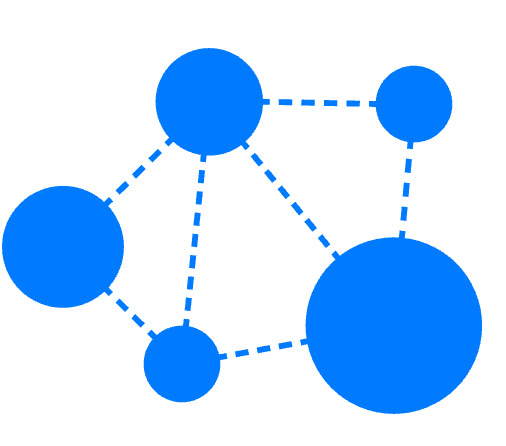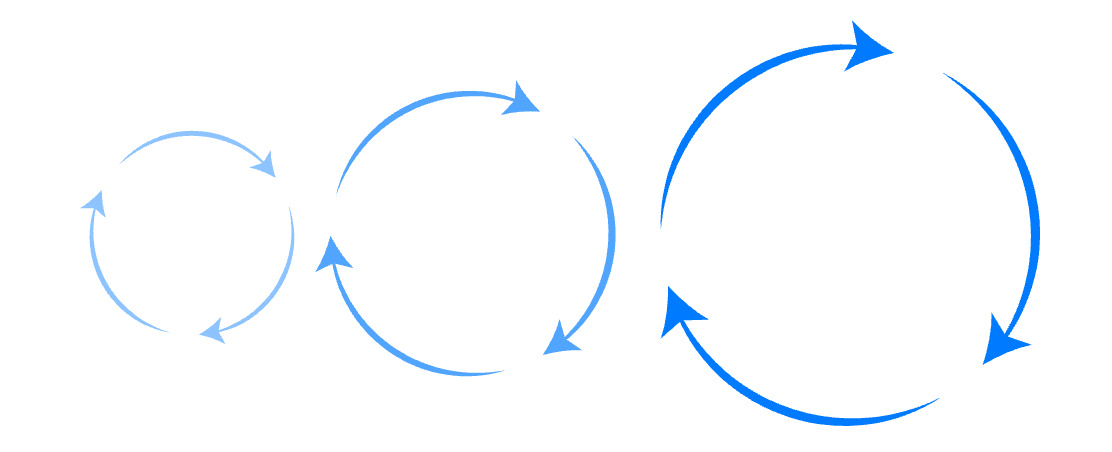Teal is not Same As Company
Differences between Traditional Companies & Teal Organizations

| In Traditional Companies | Teal Organizations |
|---|---|
| Job descriptions Each person has exactly one job. Job descriptions are imprecise, rarely updated, and often irrelevant. | Roles Roles are defined around the work, not people, and are updated regularly. People fill several roles. |
| Delegated Authority Managers loosely delegate authority. Ultimately, their decision always trumps others. | Distributed Authority Authority is truly distributed to teams and roles. Decisions are made locally. |
| Big Re-Orgs The org structure is rarely revisited, mandated from the top. | Rapid Iterations The org structure is regularly updated via small iterations. Every team self-organizes. |
| Office Politics Implicit rules slow down change and favor people “in the know". | Transparent Rules Everyone is bound by the same rules, CEO included. Rules are visible to all. |
Dynamic Roles Replace Static Job Descriptions
In most companies each person has exactly one job description. That description is often imprecise, outdated, and irrelevant to their day-to-day work. In Teal, people have multiple roles, often on different teams, and those role descriptions are constantly updated by the team actually doing the work. This allows people a lot more freedom to express their creative talents, and the company can take advantage of those skills in a way it couldn’t before. Since roles are not directly tied to the people filling them, people can hand-off and pick-up new roles fairly easily. But more than that, it means that when you’re filling a role, you’re able to energize the work with a level of clarity and awareness most traditional employees don’t have. For example, in football you know to pass to the striker not because you’re friends with him, but because he’s in the best position to score. Even if you’re mad at the person playing the striker position, you’ll still pass the ball to that role because the strategy of the game suggests that you should. Similarly, in Teal the roles are vested with authority, not the people. This means that the roles and the authorities can be constantly updated without office politics.
“Everything is vague to a degree you do not realize till you have tried to make it precise." — Bertrand Russell, The Philosophy of Logical Atomism

Distributed Authority Replaces Delegated Authority
The agility that Teal provides comes directly from truly distributed authority. In traditional organizations, managers loosely delegate authority, but ultimately, their decisions always trump those they manage and everybody knows it. Any initiative outside the norm typically requires the boss’ approval, explicitly or implicitly. In Teal, authority is truly distributed and decisions are made locally by the individual closest to the front line. Teams are self-organized: they’re given a purpose, but they decide internally how to best reach it. In this way, Teal replaces the traditional hierarchy with a series of interconnected but autonomous teams (“circles"). This shift can dramatically increase a company’s capacity to adapt to changing conditions. It also allows those companies to have both alignment and agency without the typical pathologies of “leaderless" groups or autocratic micromanagement that slows everything down.

Rapid Iterations Replace Big Re-orgs
In traditional companies, the org chart gets revamped every few years. These cyclical “reorgs" are an attempt to keep up with the changing environment, but since they only occur every 3 to 5 years, they are almost always out-of-date. In Teal, the structure of the organization is updated every month in every circle (i.e. what roles are doing and owning what work or decisions). This evolution happens in frequent incremental steps rather than rare massive changes, and it happens in every team at all levels. Companies powered by Teal reorg themselves as often as necessary to capitalize on a learning opportunity or address a critical problem. This happens in frequent “governance meetings" where roles and processes are revised given what’s actually happening in the team.
“Most startups believe in iteration of their products. Now they need to apply the same thinking to their organizations." — Adam Pisoni, Yammer co-founder & CTO
Transparent Rules Replace Office Politics
In many companies, things are done a certain way because “that’s how we’ve always done it", and those implicit rules are hard to change. Often no one knows why those rules exist, who decided them, or who can change them. This makes distributing authority almost impossible, because there is no way to ensure that everyone is following the same set of rules. In Teal, authority is distributed not from the leader at the top to a group of people, but to an explicit process defined in detail in a written document: the Teal constitution. Everyone is bound by those same rules, even the CEO. The transparency of the rules means that you no longer have to depend on office politics to get things done. With the fundamental rules made accessible to everyone, anyone in the organization can quickly figure out who owns what, the decisions he or she can make, and who to hold accountable for which functions.
“One of the principles in Teal is to make the implicit explicit. A ton of it is about creating clarity — who’s in charge of what, who’s making what kind of decisions. And there’s also a system for defining that, and changing that, so it’s very flexible at the same time." — Evan Williams, Twitter & Medium co-founder